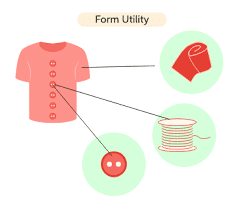Earning revenue enables us to provide you with various low-cost financial goods and services, including commission-free trading. In this section, we’ll go through how Robinhood Financial and Robinhood Crypto make money.
What Does Robinhood Do?
Robinhood is a trading app that is available for iOS and Android. The startup allows novice investors to buy stock, cryptocurrency, and ETFs without commissions through their platform. Robinhood was the first company to offer commission-free trading when it first launched.
Many major trading firms, including Charles Schwab and TD Ameritrade, began offering a zero-commission model to their consumers due to its unique approach. This zero-commission concept, however, has the wrong side.
How Does Robinhood Work?
Making tiny amounts of money on individual trades at scale is Robinhood’s principal source of revenue.
It accomplishes this by attracting a large number of users through incentives such as “free” stocks and commission-free trading, retaining those users and encouraging trading activity through behavioral triggers in the app, and earning razor-thin margins on those trades via a process known as payment for order flow (PFOF).
Getting started with investing might be complicated and time-consuming before the debut of Robinhood. With so much of its revenue reliant on acquiring a considerable number of users, Robinhood needed to decrease the usual hurdles to entry in investing — and did so by disrupting the whole brokerage industry’s status quo.
The Rise of the Free Trading Investment Platform, Pre-Robinhood
Brokers function as go-betweens, facilitating financial transactions on behalf of their clients. Customers keep brokerage accounts with their brokers, through which the brokerage makes investments. Brokerage account funds can be invested in various financial assets, including bonds, exchange-traded funds (ETFs), mutual funds, and stocks.
Brokerages are often classified into two types: cheap and full-service.
By decreasing overheads such as physical premises, discount brokerages can charge their consumers less for services supplied. They typically charge cheaper commissions than full-service brokerages but do not undertake market analysis or provide investment advice to their clients. As a result, bargain brokerages are sometimes confused with online brokerages.
Full-service brokerages often charge higher commissions but provide a broader range of services, such as market research and financial advice. Many full-service brokerages have nationwide chains of brick-and-mortar offices where consumers can meet with an adviser to discuss their investment goals.
Read Also: BROKERAGE FEE: Definition & Tips For Reducing Brokerage Fees
Investing was formerly out of reach for many people. Choosing a brokerage needed at least some market understanding, and commission fees made investing a potentially costly affair, with trades costing between $8 and $10.
That changed after the 2008 financial crisis, when the first digital brokerages appeared, promising clients a new, lower-cost investment method. These platforms swiftly gained popularity as a viable alternative to full-service brokerages.
Robinhood, which launched in 2013, has reduced the hurdles to investing that were previously prevalent. The product’s commission-free value proposition makes trading more accessible to lower-income first-time investors, and there are no minimum account requirements. Users can also trade fractional shares, fractions of a firm’s single share rather than total shares. This makes it easier to invest in high-performing stocks like Apple.
Furthermore, the Robinhood app UI is intended to prevent overwhelming new investors with information.
This accessibility significantly widens the platform’s total addressable market (TAM) by going beyond typically older, wealthier customers with at least some knowledge of investing to younger and less experienced persons. For example, the typical Robinhood customer is 31 years old, whereas the average Charles Schwab customer is roughly 50.
Robinhood now has over 18 million funded accounts.
How Does Robinhood Make Money?
Robinhood generates money by charging its institutional partners to transmit its order flow. Interest on funds, margin loans, cash management fees, and subscriptions to its Robinhood Gold service also generate money for the company.
#1. Payment For Order Flow
Most of Robinhood’s revenue comes from supplying customer orders to its institutional HFT partners. Robinhood receives a portion of the HFT’s earnings by arbitraging the client’s trades.
#2. Margin Loans
Clients of Robinhood Gold can open a margin trading account on the site. In money, Robinhood will lend the customer the funds they require to trade while they wait for their previous trades to clear with the clearinghouse, which can take up to three days. When borrowing more than $1,000 on margin, users pay 2.5% interest.
#3. Interest On Cash
Robinhood lends its cash holdings to institutional partners in exchange for interest on these loans. The company also has a dedicated debit card with Sutton Bank and receives a percentage of the interchange fees charged to its clients when they use their cards.
#4. Transfer Fees
Robinhood charges a $75 transfer fee to move money off the platform. It also charges a $20 overnight check delivery fee and a $5 fee for printed statements.
#5. Subscriber Fees
Robinhood announced its “Robinhood Gold” membership service, which charges users $5 per month to access a package of trading tools and research reports. Market statistics, fast deposits, and margin trading are also available.
Robinhood’s Business Divisions
Robinhood operates as a single business sector and presents its financial results. However, it categorizes revenue into the following categories: transaction-based revenues, net interest revenues, and other revenues. These revenue types are examined in greater detail below.
#1. Revenue from Transactions
Robinhood earns transaction-based revenue by sending its users’ orders for options, stocks, and cryptocurrencies to market makers, a practice known as payment for order flow (PFOF).
Brokerage firms that use PFOF are compensated for directing customers’ orders to a specific market maker. The payment is usually only a fraction of a penny per share, but it can be a significant source of revenue for businesses that deal with a high volume of orders.
PFOF is one of the main reasons Robinhood can offer zero-commission trading. In Q4 FY 2021, Robinhood’s transaction-based revenue increased 12.2% to $362.7 million, accounting for roughly 73% of total revenue.
#2. Net Interest Income
On securities lending transactions, Robinhood earns net interest revenue (interest revenue minus interest expenditures). In addition, interest is earned on margin loans made to users, and interest charges are spent with the company’s revolving credit facilities.
Net interest revenue increased 0.5% to $63.4 million in Q4 FY 2021, accounting for 17.5% of the overall income at Robinhood.
Other Revenue Sources
Robinhood’s other revenue sources are mostly subscription fees for Robinhood Gold. Robinhood Gold is a paid subscription service that provides consumers with premium features like increased fast deposit access, expert research, Nasdaq Level II market data, and margin investing access for approved users. Other sources of revenue include proxy rebates and various user fees.
Revenue from these sources increased by 84.0% to $35.4 million in Q4 FY 2021, accounting for approximately 9.8% of total revenue.
How to Make Money on Your Own Using Robinhood
It’s important to note that you’ll always have to pay something no matter how you invest or whose broker you choose. Although Robinhood is one of the market’s most affordable apps, some costs are connected to using its services.
The Future Growth of Robinhood
After the GameStop fiasco, Robinhood spent much of 2021 and 2022 repairing its reputation. During the infamous “short squeeze” of 2021, Robinhood suspended trading on its platform of GameStop shares. Investors believed the site was manipulating the market to assist hedge funds in recovering losses.
Robinhood’s app suffered a user exodus and hundreds of negative reviews in app stores. At the request of Robinhood, Google removed the majority of these evaluations. However, investors found on, causing significant damage to the company’s reputation. The company’s share price plummeted dramatically, and it is still trading significantly below its IPO price.
Who are Robinhood’s Competitors?
Robinhood competes with other trading apps that accept money for order flow. The companies listed below are some of its main competitors in the sector.
- WeBull
- eToro
- TD Ameritrade Inc.
- Coinbase
- E*Trade
- Schwab, Charles
What are the Recent Robinhood Developments?
On April 26, 2022, Robinhood CEO and co-founder Vlad Tenev stated that the firm would lay off around 9% of its full-time employees. Tenev highlighted that Robinhood had raised its personnel sixfold since the end of 2019 to 3,800 by the end of 2021. “This rapid expansion in headcount has resulted in some duplicate positions and job tasks, as well as more levels and complexity than are optimum,” he wrote. The next day, Robinhood’s share price hit a new low, representing a 75% drop from its IPO price.
Robinhood reported the most significant rise in bitcoin income in its Q4 2021 report, which more than doubled as the firm launched Crypto Gifts. This platform allows customers to gift cryptocurrency to relatives and friends. Robinhood’s crypto footprint is expected to grow further in 2022, as the business plans to provide cryptocurrency wallets and related services in Q1 2022. It also plans to expose its crypto platform to users worldwide in 2022.
After the meme stock trading frenzy that drove the share prices of firms like GameStop Corp. (GME) and AMC Entertainment Holdings Inc. (AMC) to astronomical levels earlier this year, the SEC announced in early June 2021 that it was undertaking a thorough study of market structure.
Read Also: Webull vs Robinhood: 2022 Comprehensive Review (The Verdict!!!)
The SEC focused on payments for order flow, ensuring that trading orders from private investors are directed to off-exchange, high-speed traders known as wholesalers, such as Citadel Securities LLC and Virtu Financial Inc. (VIRT). Off-exchange merchants must offer a price at least as good as the national best offer, which is what the legitimate exchanges offer. However, with an increasing amount of trades occurring outside of recognized exchanges, the SEC is concerned about transparency in execution prices for such trades.
PFOF has been criticized by SEC Chairman Gary Gensler, who claims the practice creates a conflict of interest for brokerages by incentivizing them to send customer orders to the highest bidder rather than the market maker giving the best prices or fastest execution. The SEC reviews several other issues that may affect Robinhood, such as “digital trading prompts” that gamifies the trading process to encourage excessive trading, market concentration and price difficulties, and settlement timelines.
Following the recent stock market turbulence, retail brokerages were required to put up additional collateral, and they blamed the two-day settlement process for stock trades. According to reports, the SEC considered cutting settlement time to a single day.
Conclusion
Robinhood has profoundly altered an industry that has usually been averse to newcomers in less than a decade.
While Robinhood may not compete for the same consumers as established retail brokerages, it will still have to work hard to convince new users to open brokerage accounts – even if the conditions of other ancillary financial products, such as Cash Management, are more advantageous than competitors.
In addition, rather than focusing solely on volume, the company will most likely need to focus on boosting the value of its typical customer. Although Robinhood has experienced rapid user growth, its competitors manage substantially more assets.
Furthermore, it will have to work hard to improve the value of its accounts to justify its current price — especially given the dangers associated with recruiting inexperienced investors new to the markets.
- ROBINHOOD INVESTMENTS: Top 2022 Robinhood Investment
- ROBINHOOD REVIEW: Why Robinhood is Bad (+ Detailed guide)
- HOW STOCK OPTIONS WORK: Everything You Need to Know!!!
- FIDELITY VS ROBINHOOD: How to Decide Which is Best (Detailed Review)
- ROBINHOOD PORTFOLIO Explained!!! Overview, Diversity, Value, Tracker & All You Need






